Concentration and Power in the Food System: Who Controls What We Eat?
More Information
By Dr. Mercola
Most of us have little to no idea how behind-the-scenes forces control the food we buy, and the depth of the corruption involved. Philip Howard, Ph.D., author of “Concentration and Power in the Food System: Who Controls What We Eat?,” studies food system changes, with an emphasis on visualizing these trends.1
“My motivation [for writing the book] was to uncover what’s going on, to help people understand who owns what and all the strategies these dominant firms use to further increase their power,” he says.
His work has been featured by many prominent media outlets, including The New York Times, The Washington Post and Chicago Tribune. He’s an associate professor in the department of community sustainability at Michigan State University and holds a Ph.D. in rural sociology.
Endgame: Global Monopolization
One fact that many don’t realize is just how few firms control the global food system, from seeds to supermarkets. As noted by Howard:
“The trend in most industries is for fewer and fewer firms to increase their power. One really dramatic example is the beer industry. Four firms headquartered in Europe brew about half the world’s beer. That’s going to go down to three very soon, because Anheuser-Busch InBev is acquiring SABMiller.
Even if you’re a very dominant firm, you’re caught up in this system where you have to get bigger or become acquired by your big competitors. But it’s resulting in less and less people making decisions about the food we eat. There’s even speculation that InBev is not increasing its sales enough, even with this acquisition, so they’re going to have to acquire a big soft drink firm, perhaps even Coke or Pepsi.”
With its $103 billion acquisition of SABMiller, InBev is now one of the three largest food firms in the world. InBev also owns Anheuser-Busch, which produces Budweiser, one of the most well-known beer brands in the world. In some parts of the world, such as in Africa and Latin America, InBev has already established a monopoly.
Antitrust rules and regulations enacted by the federal government are meant to prevent these types of monopolies. In fact, when large corporations want to buy other large corporations, a rigorous evaluation process is required before they’re authorized to merge. So how is it that this kind of monopoly-building is still happening? Howard explains:
“In the early 1900s, there were a number of laws passed to prevent these trusts, these combinations that resulted in monopolies in these markets. That changed dramatically beginning in the 1980s. Reagan was elected. He directed the heads of federal agencies to take a very different view towardtowards mergers and acquisitions.
At the same time, federal judges were being indoctrinated into the Chicago School of Economics. They got paid to go on these junkets to Arizona, Florida, places like that. They played golf. Then they attended these seminars where they were taught mergers and acquisitions that, unless they immediately raised prices for consumers, were good for everyone.
As a result of just one of those programs, by the early ’90s, two-thirds of federal judges had participated. It’s essentially impossible to win an antitrust case in the federal courts now.”
>>>>> Click Here <<<<<
Monopolies Do Not Benefit the Public
The truth is, monopolies really only benefit the corporations in question, not the population at large. It merely reinforces the company’s power, including their political clout. Many multinational corporate executives even serve on federal advisory committees and global trade agreement working groups.
Some of these international trade deals are kept secret even from the U.S. Congress, yet executives from large multinational firms are present during the negotiations. When large companies are able to influence the very regulatory agencies that are chartered to regulate them, they’re able to circumvent the regulatory process, forming what is essentially a cartel.
“A good example is the seed industry. It was taken over by big chemical companies beginning in the 1980s. We got down to just six firms. Previously, there were over 30 firms. These big six chemical companies, which are also seed companies, have cross-licensing agreements for genetically engineered (GE) technologies.
The commodity farmers that want these GE traits, like herbicide resistance — the independent seed companies cannot access those technologies. They either become acquired by these firms or end up going out of business. Right now, it’s possible that those big six will be reduced to just three.
BASF … has gotten out of the seed sales. Bayer’s trying to acquire Monsanto, Dow and DuPont are planning to merge … [and] ChemChina, a Chinese-owned chemical company, is acquiring Syngenta.”
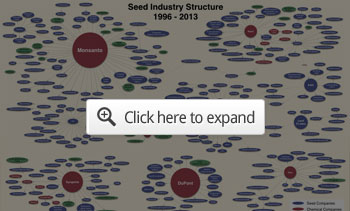
>>>>> Click Here <<<<<
Seed Monopolies Created By Chemical Companies
Monsanto is the classic example of the revolving door between government and industry. “There are people who just go back and forth between Monsanto and the agencies that are supposed to be regulating that firm,” Howard notes. Without a doubt, this influence is part of Monsanto’s success.
The patenting of seeds and the subsequent restrictions on seed have led to what is essentially a takeover of the farming industry by chemical companies. The patenting of seeds benefits these companies in multiple ways. Not only do farmers have to purchase new seed each year, since the patents do not allow for saving or sharing of seeds, these GE crops also demand certain chemicals to be used with them, which of course these companies also make and sell.
“Monsanto is using very strong intellectual property protections on seeds in the U.S. and trying to extend that model all over the world. With the trade agreements, they’re forcing other countries to change their laws to protect companies like Monsanto, rather than allowing farmers to save and replant seeds. In the U.S., some farmers have even gone to prison for saving seeds, not to mention the millions of dollars in fines,” Howard says.
There are many reasons to suspect GE seeds were developed to increase chemical sales, as most of the stated benefits of GE seeds have actually turned out to be false. As just one example, Monsanto insisted it was biologically impossible for weeds to develop resistance against glyphosate, yet resistant superweeds have now taken over more than 60 million acres of U.S. croplands.2
The chemical biotechnology industry’s answer is to develop crops resistant to more toxic herbicides, but anyone with half a brain should realize that this “solution” will only aggravate the problem, creating weeds resistant to these more potent toxins as well. Sooner or later, we have to get off the chemical treadmill or foods will be too toxic to eat even in the short term.
Despite Grave Concerns, Beneficial Changes Are Also Afoot
In his book, Howard explores the entire supply chain, from seed to farm, to processing and distribution to the retail market, looking at how things have changed over the years. For example, in 1937, there were nearly 6.8 million farmers in the U.S., which at that time had a population of about 100 million. Today, we have fewer than 2 million farmers, with a population of more than 325 million.3
What’s worse, an estimated two-thirds of the farm commodities sold in the U.S. come from just 100,000 farms, and these middle-to-large-scale farms just keep getting bigger. The reasons for this trend are manifold, but government subsidies play a significant role. About 85 percent of federal subsidies go to the top 10 percent of farms, which reinforces their advantages, allowing them to expand and buy out neighboring farms.
There are some very clear and real concerns about our food distribution system. But while the situation can seem depressing, beneficial changes are also occurring. As noted by Howard:
“There are a lot of efforts to resist these trends … [B]ig firms are getting bigger … because they have no other way to grow. Beer sales in the U.S., for example, are really leveled off, except for the craft brew segment. We’ve had this dramatic increase in the number of breweries in the U.S., thousands and thousands now.
Their percentage in sales is well over 10 percent. If you just look at the beer aisle in your supermarket, there’s a lot more choice than there was 10 or definitely 20 years ago. One response the big brewers have tried, just in the last few years, is buying up some of those craft breweries.
But the genie is out of the bottle. People have moved away from those macrobrews. They’re not increasing their sales at all — that’s why they’re having to look at other parts of the world for growth.
There are many [other] examples like [that] in other parts of the food system. Heritage breed turkeys, for example. The numbers have gone way up even though in the 2000s, there were less than 2,000 turkeys in the entire U.S. that weren’t broad-breasted white. People are creating more and more of these alternatives. It’s just hard to find them and support them.”
Needless to say, one alternative is to grow some of your own food. We cannot all grow all kinds of food or raise all of our own livestock, but most people can grow something. At present, I grow about half of all the food I eat in any given week. As noted by Howard:
“Even if you have no space, you can grow some sprouts, for example. You just become a little bit self-sufficient in that way. If you don’t have any space at all to even have a container garden, then you can make connections with local farmers.
There are more and more community-supported agriculture farms and cooperatives where farmers come together at a drop-off point once a month, and buy-ing clubs. It’s really encouraging to see that people are really fed up with the industrial food system and are finding all these alternatives and we’re creating more spaces for them to thrive.”
How Corporate Takeovers and Mergers Impact Food Quality
Howard discusses many interesting case samples in his book, including that of Silk Soymilk, which is a powerful illustration of how food quality is impacted when a small, integrity-based brand is acquired by a large conventional entity. Personally, I do not recommend drinking soymilk. It’s unhealthy for a number of very good reasons, its lectin content being a major detriment.
Nevertheless, Steve Demos, who started the Silk brand sincerely believed soymilk was a healthy product. One of the limitations he faced was breaking into conventional supermarkets, because they charge slotting fees to the tune of billions of dollars per year. To get a single product into a regional supermarket chain can cost tens of thousands of dollars. The way Demos was able to implement his vision was by approaching big firms like Coca-Cola.
One of the companies he secured funding from was Dean Foods. They paid the slotting fees to get Silk soymilk into the supermarkets. The brand grew exponentially, and at one point, Silk had over three-quarters of all soymilk sales, which is more or less a monopoly. The price Demos paid was losing control of his company to his investors. Dean Foods eventually acquired 100 percent of the company, and Demos was unable to block the takeover.
“Not surprisingly, Dean Foods reduced its commitment to organic ingredients. They reduced the commitment to sourcing North American soybeans. They started sourcing soybeans from China and Brazil. They went from a 100 percent organic firm to maybe 6 percent organic today,” Howard says.
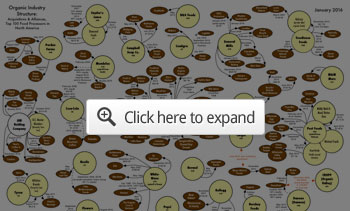
>>>>> Click Here <<<<<
Stonyfield is another example of a company whose founder was an idealistic and altruistic person dedicated to providing the best product possible, but who eventually lost control of the company in his effort to grow. In the process, the quality of the product was lowered as well.
“Stonyfield was an interesting case because Gary Hirshberg, the founder, had to pay off all his investors, his friends and family that helped him create this firm. He also wanted to make those products available to more consumers.
He spent a long time negotiating a buyout with Danone, the French yogurt company. But its contention was on increasing sales, so they had to water down some of their ideals, like their commitment to organic, to increase sales. Now, they’re very vulnerable. They could end up becoming a part of a foreign firm.”
Examples of Companies That Refused to Sell Out
On a more positive note, some firms have resisted tremendous buyout offers, refusing to sacrifice their ideals. One example is Clif Bar. At the last minute, Gary Erickson walked away from a $60 million offer by Quaker Oats, a division of Pepsi, because he saw that many of the promises made early on in the negotiations were being reneged. He didn’t feel confident they would maintain the commitment to his ideals. So, Clif Bar is still independent, and the company is giving money to a number of environmental causes.
Another intriguing example is Eden Foods, which has held very high organic standards right from the start — so high, in fact, they refused to put the USDA organic label on their food, even though it was organic, because they thought the organic label had been compromised. According to Howard:
“They’re a firm that’s had a commitment to sourcing from local suppliers and not [using] a lot of synthetic processing aids. They were opposed to the watering down of organic processing standards to allow synthetics. They still don’t put the USDA organic label on their products. They were pretty fortunate.
They’ve been around so long — since the ’70s — that their integrity is well-known to a certain number of consumers. They were able to get into a distribution system. It’s very likely if they were trying to start out today, they would never make it. It’s unfortunate more people don’t know which companies are independent, companies like Nature’s Path and Bob’s Red Mill.
Bob actually hired someone specifically to fend off buyout offers. They would just tell people who inquired ‘no.’ They never even told Bob the amounts he was being offered. Bob’s Red Mill and Clif Bar have both gone into an employee stock ownership program rather than to just sell out to the highest bidder.”
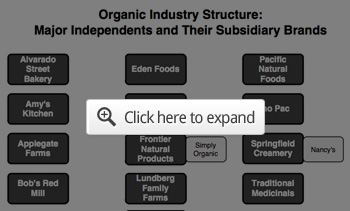
>>>>> Click Here <<<<<
Distribution Monopolies
The manufacturing and distribution parts of the supply chain are somewhat mysterious behind-the-scenes components of the food system that few people fully understand. First, the base ingredients have to be made, and then someone has to combine them and put them in a box. Oftentimes, different companies are hired to do certain steps of the process.
When you delegate these responsibilities to other companies, you can easily run into problems, even if they’re well-intentioned, as everyone is looking for ways to cut costs. Some ethically challenged companies may sell you subpar ingredients, for example. But even when the ingredients are high quality, the food is still processed, which affects the food’s nutritional value. Part of the solution is preparing your foods from scratch. Then you can bypass these hidden pitfalls.
Next, the food has to be distributed from the manufacturing facility to storage facilities and, ultimately, to stores. Howard explains some of the complexities involved, and the problem with monopolization in this area:
“You’re getting things from point A to point B, sometimes with refrigeration. We had a cooperative distribution system in the 1980s. We had dozens of cooperatively owned distributors across the U.S. that distributed organic and natural foods. But as the industry grew, they couldn’t keep up. They didn’t have the capital to buy more trucks and warehouses and so on.
A company called United Natural Foods swooped in and acquired the two largest remaining cooperative distributors back in 2002. They’re now publicly traded. Their main customer is Whole Foods. For the broader national distribution of foods, there’s Sysco. At just about any restaurant you go to, you will see a Sysco truck.
They have one major competitor — U.S. Foods. At the time I wrote the book, Sysco was planning to acquire U.S. Foods. Meaning, all of these people who pitted them against each other to get better deals weren’t going to have that option.
This is one of those things I wasn’t expecting, but it was so clear that there were only two firms at that scale that the U.S. government actually undid that acquisition. So, there are still two, although they both continue to acquire a number of other smaller distributors.”
Helpful Resources
Even though the facts are quite disheartening, there is something you, your family and friends can do to change this sad state of affairs. Remember, you have a very powerful resource — you can vote with your pocketbook, which is the ultimate arbiter of corporate behavior. Howard ends his book with resources you can use to help you make more educated choices, including the following:
- GoodGuide.com, which is also available as an app, has a database covering 75,000 products. You can take a picture of a barcode or type in the product name and get a score for the company’s environmental, social and health impact, compared to other products in that category. It’ll also provide ownership information, so you can see which parent company you’re actually supporting with your purchase
- Buycott.com has both a website and an app that allow you to vote with your wallet by learning a product’s history and ownership, and avoid companies that are being boycotted for various reasons, such as those using chocolate produced by child slaves, or those using genetically modified ingredients
More Information
To learn more, pick up a copy of Howard’s book, “Concentration and Power in the Food System: Who Controls What We Eat?” If you’re interested in more details, they’re all there. The take-home message is that you need to vote with your pocketbook and really make the commitment to eating real, unprocessed food. Ultimately, that’s how we change this corrupt and distorted food system.
As noted by Howard, it’s up to each and every one of us to find out who we are supporting with our hard-earned money. In a best-case, ideal-world scenario, everyone would start cutting down on processed foods. That’s really key, because if you do that, you’re not likely going to support a large corporation, particularly if you buy locally.
“We need to really start avoiding those big firms, these 10 firms that control one-third of food and beverage sales in the U.S. and be willing to spend more in some cases, if it means getting a higher-quality product, or using less of it, and supporting smaller and local and independent firms,” Howard says.
It’s important to realize we CAN shift the behavior of these corporations. They’re investor-controlled and investors want profit. If their profits go down, they have to respond to public pressure. This is how we can get many of the toxic additives out of our food supply, and how we will get GE ingredients out. All you have to do is don’t buy those kinds of products. They can have all these elaborate systems set up and control all of the federal regulatory agencies, but if people aren’t buying, none of that matters. In addition to that:
“Many of these big firms receive enormous subsidies, direct and indirect. One of the ways we can change things, not only by seeking out and supporting alternatives, is by putting pressure on the government to end these big subsidies and level the playing field,” Howard says.
Source:: Mercola Health Articles

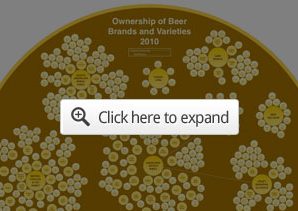
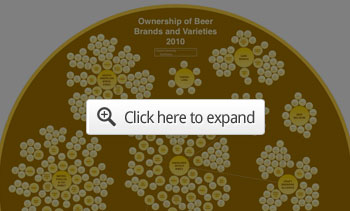

 Body Charge Nutrition is a premium nutritional supplement provider based in Western Canada offering only products and information that are of the highest quality and integrity. Through knowledge and personal experience, it is our goal to assist you with taking control of your health.
Body Charge Nutrition is a premium nutritional supplement provider based in Western Canada offering only products and information that are of the highest quality and integrity. Through knowledge and personal experience, it is our goal to assist you with taking control of your health.